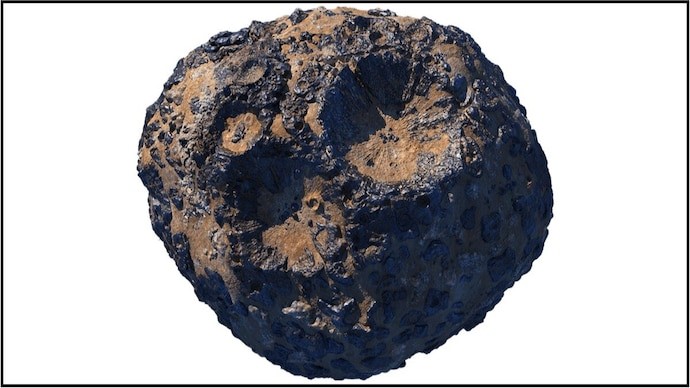Description

Disclaimer: Copyright infringement not intended.
Context
- NASA's Psyche mission is a groundbreaking scientific endeavor aimed at exploring a unique and intriguing metallic asteroid called 16 Psyche.
- This mission promises to provide valuable insights into the early history of our solar system, the formation of planetary bodies, and the mysteries of Earth's core.
Details
Mission Objective
- The primary goal of the Psyche mission is to unravel the mysteries of 16 Psyche, a metallic asteroid located in the asteroid belt between Mars and Jupiter.
- By studying this asteroid up close, scientists hope to gain a deeper understanding of the processes that shaped the terrestrial planets, including Earth.
Asteroid 16 Psyche
- 16 Psyche is an asteroid that orbits the Sun between Mars and Jupiter.
- It is believed to be composed mainly of iron and nickel, similar to the Earth's core.
- This makes it a unique target for study because it offers a rare opportunity to directly investigate the interior of a planetary body made primarily of metal.
.jpg)
Mission Timeline
- The launch of the Psyche spacecraft is scheduled for October 5, 2023, at 8:04 PM IST.
- The journey to reach 16 Psyche will span nearly six years and cover approximately 3.6 billion kilometers.
- Arrival at the asteroid is expected to occur in the mid-2030s.
Scientific Instruments
- The Psyche spacecraft is equipped with a suite of scientific instruments to study the asteroid in detail.
- These instruments include a Multispectral Imager, Gamma-Ray and Neutron Spectrometer, Magnetometer, and a Radio Science system.
- These tools will help scientists determine the asteroid's composition, magnetic field, and surface properties.
Secondary Mission - NASA's Deep Space Optical Communications (DSOC)
- In addition to its primary mission, the Psyche spacecraft will host a pioneering technology demonstration called NASA’s Deep Space Optical Communications (DSOC) experiment.
- DSOC aims to test high-bandwidth optical communications back to Earth during the early stages of the Psyche spacecraft's journey. This technology has the potential to revolutionize long-distance data transmission in space.
Scientific Significance
- The Psyche mission is expected to provide critical insights into the formation and evolution of our solar system.
- Studying the composition and history of 16 Psyche can help refine models of planetary formation and the differentiation of planetary cores.
- The knowledge gained from this mission could have implications for understanding Earth's own core and the processes that shaped our planet.
Collaboration and Leadership
- NASA's Psyche mission is led by Arizona State University (ASU) in collaboration with other institutions and organizations.
- Maxar Technologies is responsible for building the spacecraft.
.jpg)
Conclusion
NASA's Psyche mission represents a significant step forward in our quest to uncover the secrets of our solar system's formation and the Earth's core. By studying the metallic asteroid 16 Psyche, scientists hope to answer fundamental questions about the building blocks of planets and the early history of our solar system. This mission also holds promise for advancing space communication technology through the DSOC experiment.
|
PRACTICE QUESTION
Q. Consider the following statements regarding NASA's Psyche mission:
1. The Psyche mission aims to explore a metallic asteroid called 16 Psyche, located in the asteroid belt between Mars and Jupiter.
2. The Psyche spacecraft will host a technology demonstration known as NASA's Deep Space Optical Communications (DSOC) experiment.
3. 16 Psyche is composed mainly of water ice, making it similar in composition to Saturn's moon, Enceladus.
Which of the statements above is/are correct?
A) Only Statement 1 is correct.
B) Statements 1 and 2 are correct.
C) Statements 1 and 3 are correct.
D) All three statements (1, 2, and 3) are correct.
Answer: B)
|











